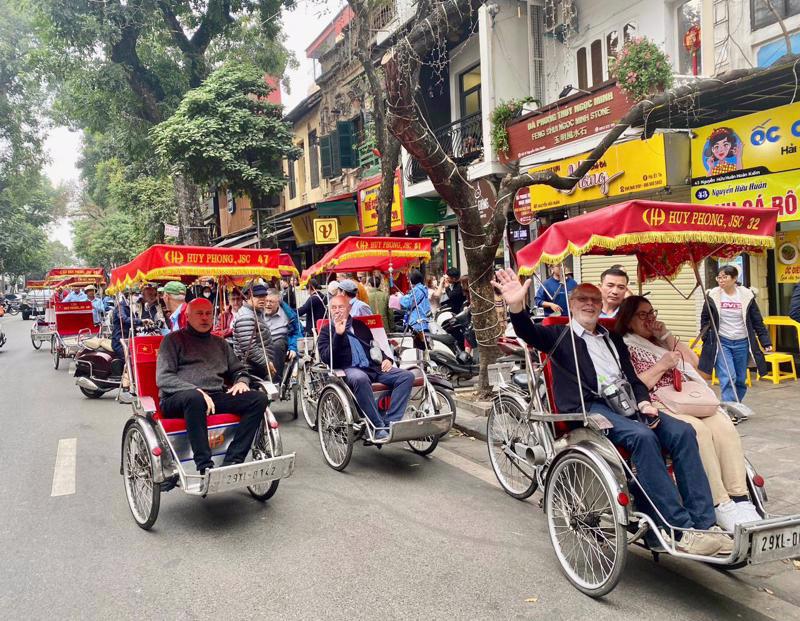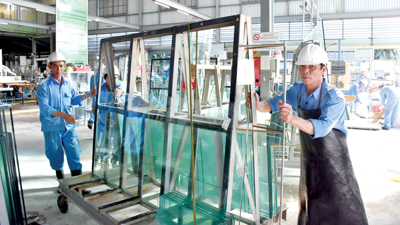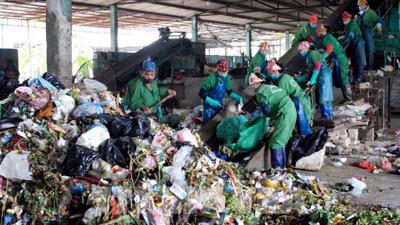Solutions for boosting tourism
Aviation is crucial in boosting Vietnam’s tourism sector by enhancing connectivity, reducing travel costs, and improving the overall visitor experience.

In the context of more and more countries competing fiercely to attract international tourists, Vietnam has been busy exploiting its strategic strengths to enhance its competitiveness. On May 18, 2023, the government issued Resolution No. 82/NQ-CP on key tasks and solutions to accelerate recovery and consolidate effective and sustainable tourism development. The Resolution sets out a host of solutions to boost tourism, including improving infrastructure and logistics services, such as aviation logistics, to bolster the tourist experience and develop Vietnam’s tourism brand.
Network expansion
Four Vietnamese airlines - Vietnam Airlines, Vietjet Air, Bamboo Airways, and Vietravel Airlines - currently operate 98 international routes to 20 countries and territories. Seventy-two foreign carriers from 30 countries and territories, meanwhile, operate 124 routes to and from Vietnam.
In particular, Vietjet opened a series of new international routes during 2024, focusing on key markets for Vietnam’s tourism sector, such as Hanoi - Kuala Lumpur, Da Nang - Ahmedabad in India, and Ho Chi Minh City - Xi’an in China, increased the frequency of direct flights between Ho Chi Minh City and Perth, Australia, and did likewise with many other destinations in the region, such as South Korea, Japan, and Hong Kong (China).
Vietnam Airlines also opened new direct flights to Milan in Italy and Munich in Germany, Hanoi and Ho Chi Minh City to New Delhi and Mumbai in India and Manila in the Philippines, and Ho Chi Minh City to Perth. “In the new era, Vietnam’s aviation industry still has a lot of potential and room for development,” Mr. Dang Ngoc Hoa, Chairman of the Board of Directors at Vietnam Airlines, was quoted as saying. “We clearly realize that wherever Vietnamese aircraft fly, our ‘soft borders’ will expand.”
Two airlines with smaller market shares - Bamboo Airways and Vietravel Airlines - are also gradually restoring and expanding their international flight networks. Bamboo Airways has recently restored flights to Bangkok, while Vietravel Airlines has continued to operate flights from Hanoi and Ho Chi Minh City to Bangkok since 2022 and will maintain charter flights to Taipei (Taiwan, China), Hanoi - Sanya (China), Ho Chi Minh City - Takamatsu / Fukushima (Japan), and Da Nang - Fukushima.
From this, the total number of international visitors in the first eleven months of 2024 reached over 15.8 million, an increase of 41 per cent over the same period of 2023, according to the Vietnam National Authority of Tourism (VNAT). The largest international tourist markets include South Korea, China, Taiwan (China), Japan, the US, India, Malaysia, Cambodia, Australia, and Thailand. Notably, international visitors to Vietnam mainly arrive and depart by air, with more than 1.4 million visitors, followed by road, with more than 277,000 visitors, and by sea, with 32,000 visitors. Aviation services have therefore played a major role in boosting tourism in Vietnam in recent times.
At a forum on aviation logistics services for developing Vietnam’s tourism brand, held on December 26 in Hanoi by the Institute for Brand and Competitiveness Strategy (BCSI), Mr. Vo Huy Cuong, former Deputy Director of the Civil Aviation Authority of Vietnam (CAAV), emphasized that these positive results are due to Vietnam’s established image as a safe destination, particularly in aviation security and safety. Vietnam’s visa procedures are now considered more open than those of many other countries, creating favorable conditions to attract international tourists. Additionally, since the Covid-19 pandemic, the government, the Ministry of Transport (MoT), and other entities have worked closely with foreign partners to restore international flights disrupted by the pandemic, helping build trust with foreign airlines.
International transport output in 2024 is estimated to exceed 41 million passengers, a 27 per cent increase from 2023. Meanwhile, the international air transport market to and from Vietnam is forecast to grow by over 10 per cent in 2025. With an average annual growth rate of 5-6 per cent, Vietnam’s aviation market is projected to welcome around 150 million passengers by 2035 and 200 million by 2040, for increases of 1.9-times and nearly 2.5-times compared to 2019, respectively. “This is a turning point for Vietnam’s tourism industry,” Mr. Cuong believes.
Dr. Le Tuan Anh, Head of the Faculty of Tourism Management and International Languages at the Hanoi University of Culture, affirmed that the aviation industry is not only a bridge between tourists and destinations in Vietnam but also a channel to promote Vietnamese tourism, and as such holds a very important position in promoting the return of tourists.
Mutual handshake
Tourism and aviation share a symbiotic relationship that drives mutual development, with each sector enhancing the growth and success of the other.
However, according to research by the Association of Asia-Pacific Airlines (AAPA), airfares globally today and in the future are tending to increase more than previously. Airlines are therefore facing a series of disadvantages, such as high fuel costs, fleet upgrades, additional leases / purchases, aircraft maintenance, human resources shortages, and rising airport service prices, etc. “High airfares are a barrier to many tourists, affecting tourism development,” said Mr. Cuong.
From an airline’s perspective, Mr. Nguyen Quang Trung, Head of the Development Planning Department at Vietnam Airlines, told a workshop in June that the increase in airfares is in line with the general trend of the global aviation industry, due to high fuel prices, with an average increase of 34 per cent in 2024 compared to 2019, from $76.7 per barrel to $102.8 per barrel; inflation and currency devaluation, with an average increase of 8 per cent in Vietnam in 2024 compared to 2019; and the engine recall by Pratt & Whitney, which led to a global shortage of aircraft, affecting aircraft lease prices, which increased by an average of 20-30 per cent in 2024 compared to 2019.
Notably, experts believe that the cost of operating flights will certainly increase due to the requirement to use sustainable aviation fuel (SAF) to cut emissions. The price of SAF fuel is currently more than double the price of regular aviation fuel, which presents a significant challenge for both domestic and international air transport. Reducing airfares is therefore a difficult task.
Meanwhile, on the tourism business side, Mr. Pham Duy Nghia, CEO of Vietfoot Travel, said that prior to Covid-19, Vietnam had three developed airlines and a growing number of flights to domestic and international destinations. Today, however, only two airlines - Vietnam Airlines and Vietjet Air - remain strong, while foreign carriers have increased flights to destinations such as Hanoi, Ho Chi Minh City, and Da Nang. “Two domestic airlines have reduced the number of flights to their destinations, and airlines are an important factor in a tour’s price,” he added. “This is a major problem for travel businesses. Airfares are too high compared to the region, making it difficult for customers in the European, Asian, and Middle Eastern markets to book tours to Vietnam.”
Over 80 per cent of international visitors to Vietnam travel by air, and experts agree that there needs to be close cooperation between airlines, travel agencies, and management agencies to build attractive tourism packages, thereby optimizing costs and improving the tourism experience. It is also necessary to promote the development of aviation logistics, to optimize costs, improve service quality, and diversify tourism products.
In particular, it is necessary to exploit and promote retail and airport services to the maximum extent, as well as deploy additional early morning and late evening flights with discounts of 20-30 per cent compared to regular flight prices. In addition, travel agencies, accommodation facilities, entertainment areas, and tourist attractions in tourist areas need to participate in the campaign to stimulate demand for night flights, thereby contributing to promoting the tourism industry. “If we can diversify flight routes and reduce prices compared to the present time, the cost of a tour program will decrease, and we can attract international customers,” said Mr. Nghia.
On February 24, 2024, the Prime Minister issued a directive on comprehensive, rapid, and sustainable tourism development, directing relevant ministries and branches, including the MoT, to research and implement solutions to improve the quality of aviation and logistics services in support of the development of Vietnam’s tourism. This will also provide favorable conditions for aviation and tourism to continue supporting each other in mutual development.







